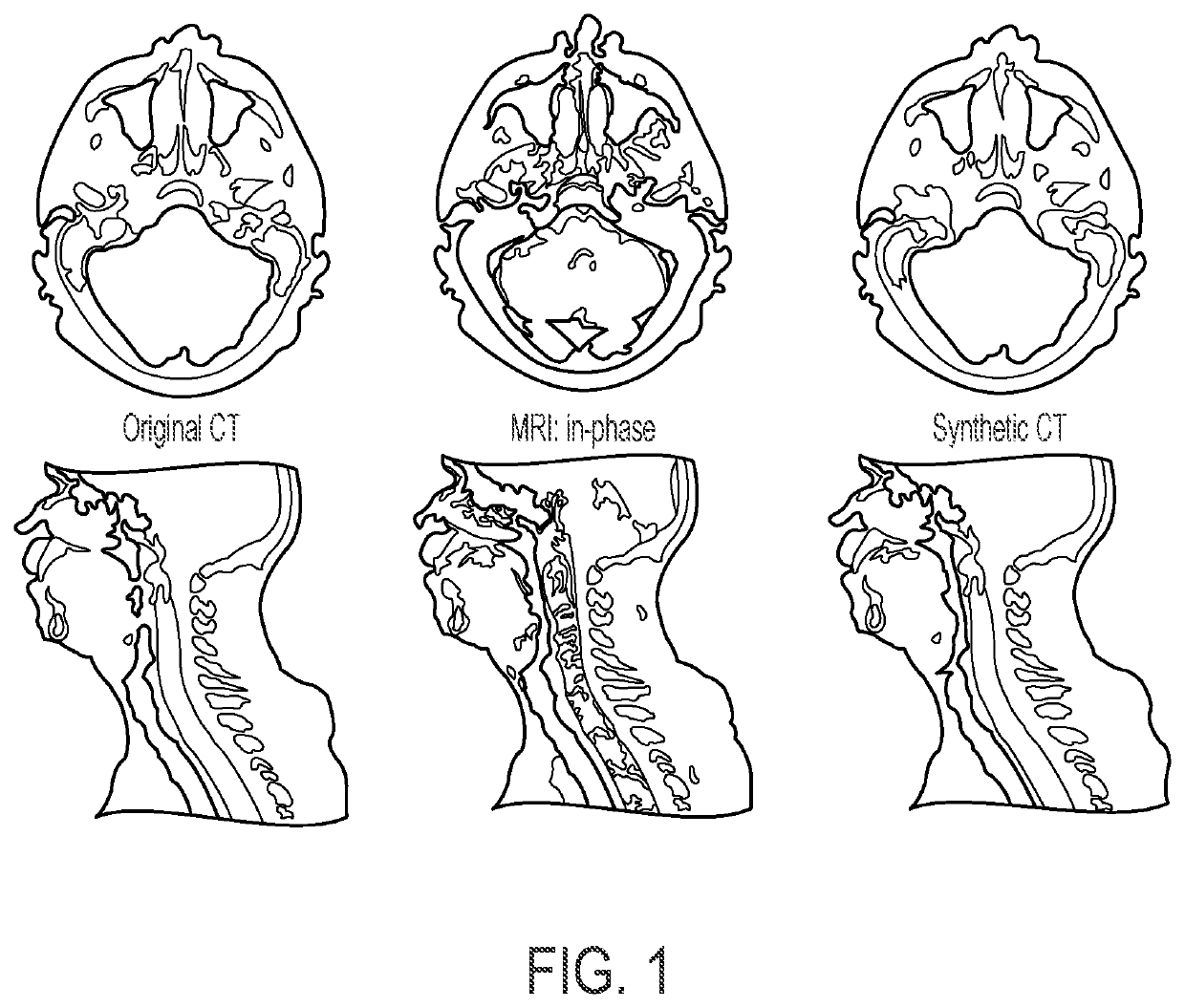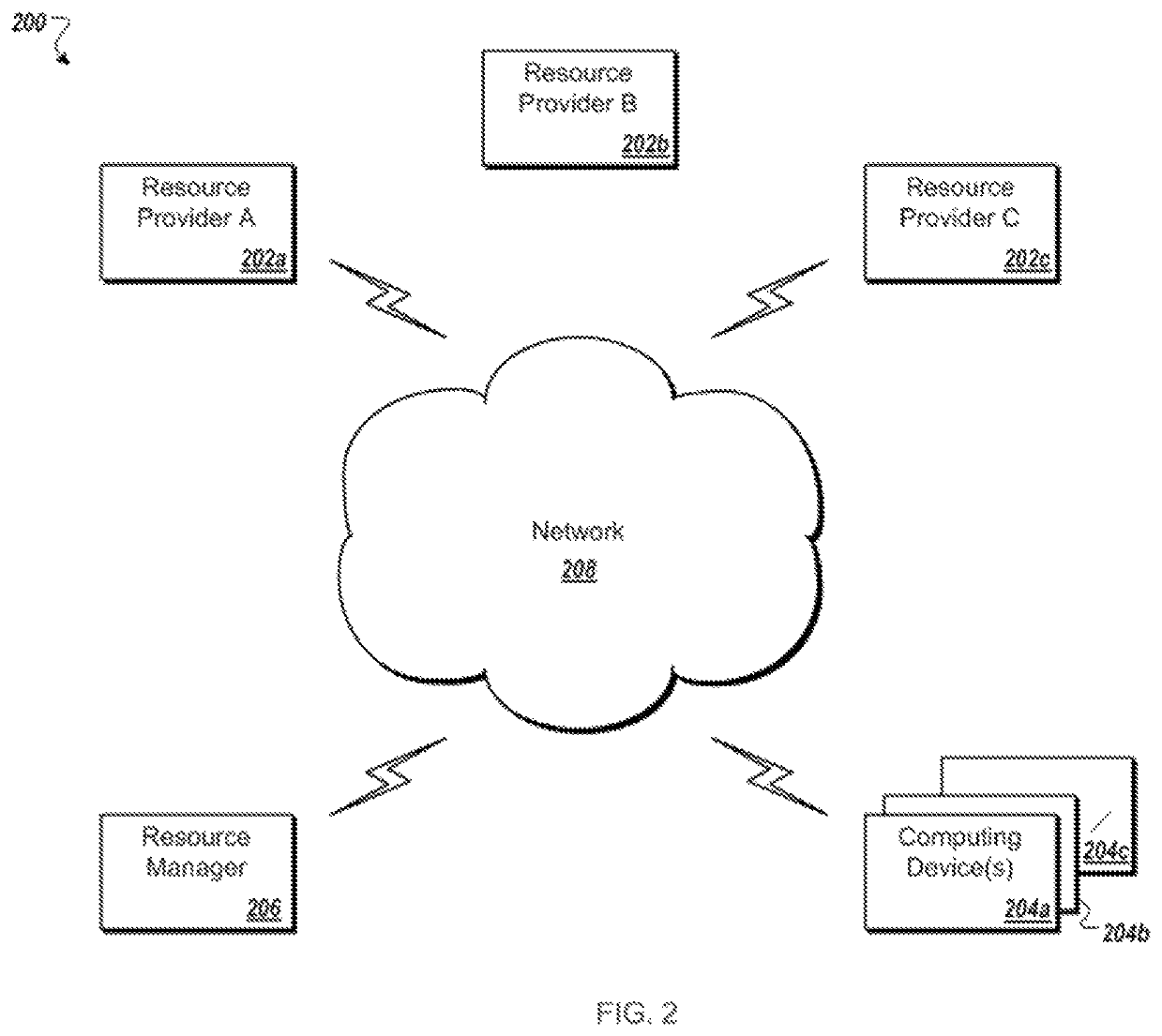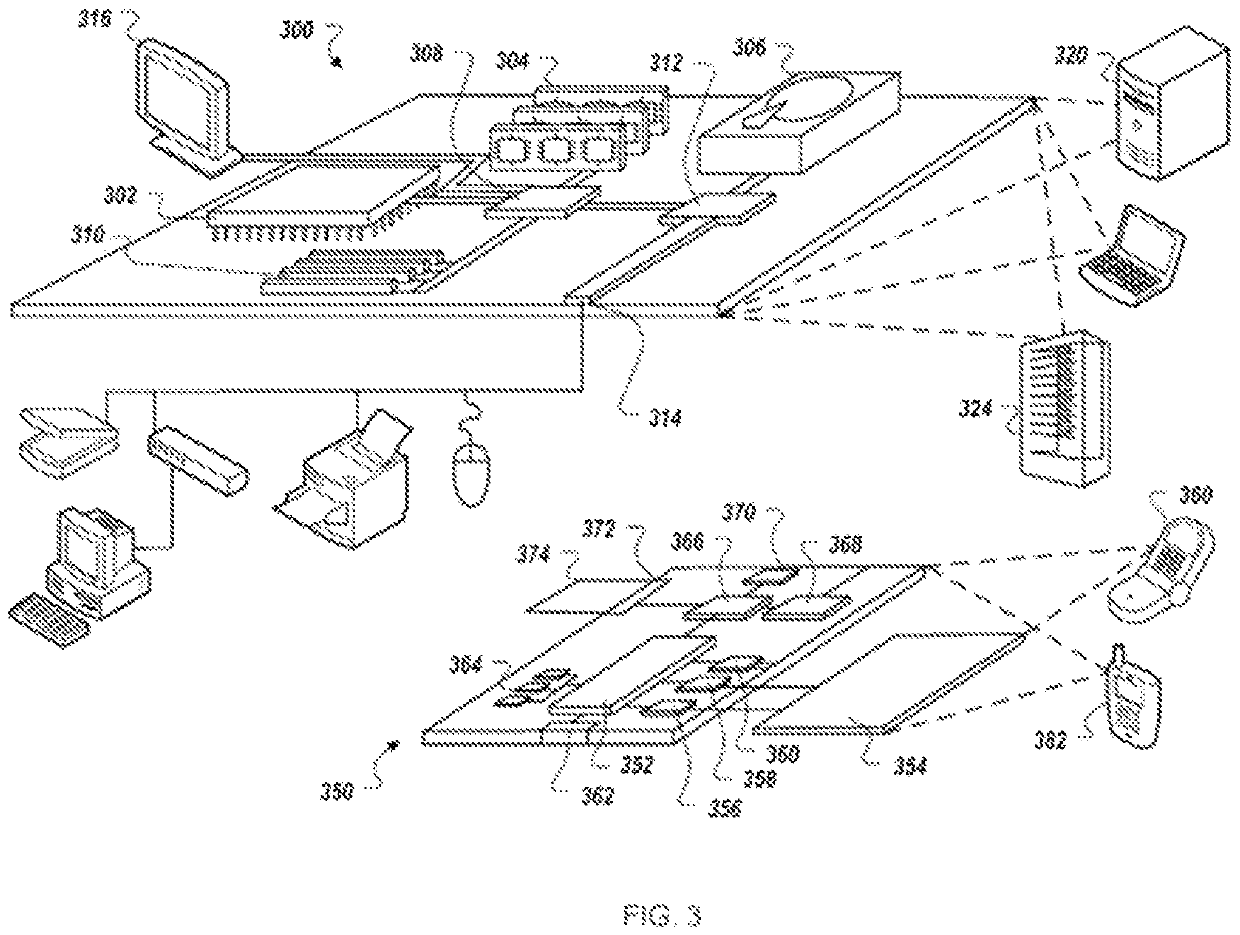Methods and systems for synthetic computed tomography (CT) image creation
a synthetic computed tomography and image creation technology, applied in the field of biological imaging methods and systems, can solve the problems of inaccuracy of the method assignment of the hounsfield unit to each point in the synthetic ct, the patient is expensive and time-consuming to undergo both mr and ct scanning, and the radiation therapy planning process is inaccuracy, so as to achieve more accurate transfer of normal tissue segmentation, improve similarity, and accurate assignment of the hounsfield uni
- Summary
- Abstract
- Description
- Claims
- Application Information
AI Technical Summary
Benefits of technology
Problems solved by technology
Method used
Image
Examples
experimental example
[0040]Eleven sets of CT and MM (in-phase, Philips mDixon sequence) scans were randomly selected from a pool of H&N cancer patients. A bias field correction algorithm was primarily applied to each MRI scan to eliminate the intensity variation due to B0 and B1 field inhomogeneity and tissue susceptibility effect. A landmark-based MM standardization technique was then used to standardize the MR intensity histograms wherein each landmark, a total of four, corresponds to a different histogram extremum. Using a rigid+deformable registration, a CT scan from each patient was registered to the standardized MRI to construct an atlas of CT-MRI. To improve the performance of the registration, bone intensity in the CT image was suppressed to increase the image intensity similarity between CT and MRI scans. CT image was initially clustered into classes of air, bone and soft tissue. The cluster center of the bone class was then transformed to the air class to suppress the bone signal. To synthesiz...
PUM
 Login to View More
Login to View More Abstract
Description
Claims
Application Information
 Login to View More
Login to View More - Generate Ideas
- Intellectual Property
- Life Sciences
- Materials
- Tech Scout
- Unparalleled Data Quality
- Higher Quality Content
- 60% Fewer Hallucinations
Browse by: Latest US Patents, China's latest patents, Technical Efficacy Thesaurus, Application Domain, Technology Topic, Popular Technical Reports.
© 2025 PatSnap. All rights reserved.Legal|Privacy policy|Modern Slavery Act Transparency Statement|Sitemap|About US| Contact US: help@patsnap.com



